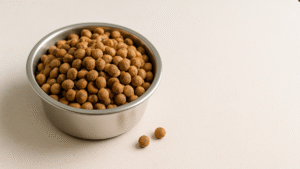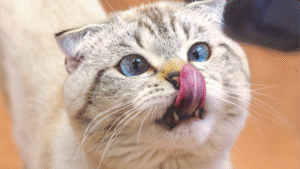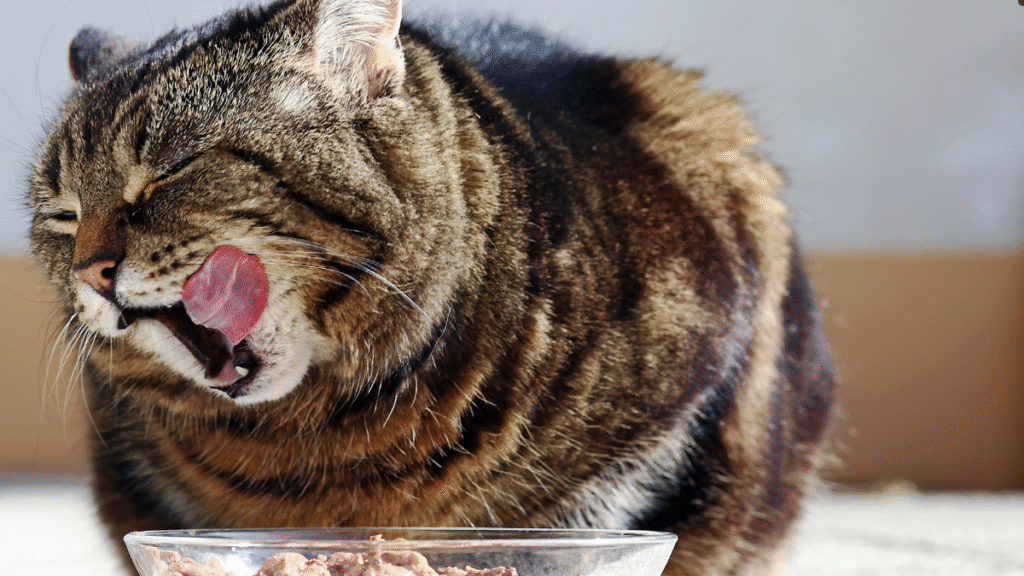Cats are more than just animals; they’re members of the family. As with any family member, we want them to live the healthiest lives possible. One of the best ways to support your cat’s long-term health and vitality is through proper nutrition. In recent years, more and more pet owners have begun switching to natural cat food as they learn about the hidden dangers of overly processed kibble and artificial additives.
If you’ve been wanting to transition your cat to a natural diet but aren’t sure how, we’ll cover everything you need to know about switching your cat to natural cat food—including why natural food matters, how to make the change gradually, what to look for on labels, and how to keep your cat happy, healthy, and well-fed every step of the way.

What Is Natural Cat Food?
Before we dive into the details of switching foods, it’s helpful to understand what “natural” really means.
The Association of American Feed Control Officials (AAFCO) defines natural pet food as food that contains only ingredients sourced from plant, animal, or mined origins. These ingredients should not be chemically synthesized or heavily processed, except for vitamins, minerals, and trace nutrients that are added for balance.
In plain language, natural cat food is made with real, minimally processed ingredients such as fresh meats, vegetables, whole grains, and natural fats. It avoids the artificial preservatives, flavors, and colorants common in many commercial brands.
You might also see labels like organic cat food, grain-free cat food, or holistic cat food. While these also offer health benefits, they have slightly different meanings:
-
Organic cat food: Made with ingredients grown without synthetic pesticides or fertilizers.
-
Grain-free cat food: Excludes grains like corn, wheat, and rice, focusing instead on proteins and low-carbohydrate vegetables.
-
Holistic cat food: Considers the overall well-being of the pet, emphasizing balanced, natural nutrition.
While all of these options fall under the broader category of natural feeding, not all “natural” products are created equal. Reading labels carefully and knowing what to look for is essential.
Why Switch to Natural Cat Food?
There are several potential health benefits of switching to natural cat food:
Improved Digestion
Cats can be sensitive to fillers, artificial additives, and excessive carbohydrates. Natural cat food typically uses higher-quality proteins and fewer unnecessary ingredients, making it easier for your cat to digest.
Healthier Coat and Skin
Natural sources of omega-3 and omega-6 fatty acids, such as fish oil or flaxseed, contribute to shinier coats and fewer skin issues.
More Energy and Vitality
Balanced nutrition made from real, wholesome ingredients provides sustained energy and supports higher activity levels.
Reduced Allergies and Sensitivities
Artificial additives and some grains can trigger food allergies in cats. A natural diet minimizes exposure to these allergens, leading to fewer digestive problems and less skin irritation.
Better Weight Management
Natural foods are often higher in protein and lower in carbohydrates, aligning more closely with a cat’s natural carnivorous diet. This helps maintain a healthy body weight and lean muscle mass.

Step-by-Step Guide: How to Switch to Natural Cat Food
Transitioning to a new food should always be done gradually, regardless of what you’re switching from or to. Cats are creatures of habit, and sudden changes can lead to digestive upset or refusal to eat.
Step 1: Choose the Right Natural Cat Food
Research and select a reputable brand that emphasizes quality, transparency, and balanced nutrition. Look for:
-
A named animal protein source as the first ingredient (e.g., chicken, salmon, turkey)
-
No artificial colors, flavors, or preservatives
-
Minimal or no fillers such as corn, wheat, or soy
-
Added taurine (an essential amino acid cats cannot produce naturally)
-
A balanced blend of vitamins and minerals
Popular natural cat food brands include Wellness, Blue Buffalo, Merrick, Nutro, and Open Farm. You can choose between wet food, dry kibble, or even raw or freeze-dried options depending on your cat’s preferences.
Related:10 Healthy Cat Treats They Will Come Running For
Step 2: Talk to Your Veterinarian
Always consult your vet before making significant dietary changes. They can recommend the best natural formula based on your cat’s age, breed, health condition, and lifestyle. For instance, cats with kidney disease may require specific protein levels, while overweight cats may benefit from a lower-calorie, high-protein formula.
Step 3: Transition Gradually
Switching cat food overnight can cause stomach upset, vomiting, or diarrhea. Follow this gradual transition plan:
-
Days 1–3: Mix 25% new food with 75% old food.
-
Days 4–6: Mix equal parts (50/50) of new and old food.
-
Days 7–9: Mix 75% new food with 25% old food.
-
Day 10 onward: Feed 100% new food.
If your cat shows signs of digestive distress or loss of appetite, slow down the transition and give them more time to adjust.

Step 4: Monitor Your Cat’s Reaction
Observe your cat’s behavior, appetite, energy levels, litter box habits, and coat condition. Signs the switch is going well include:
-
Steady energy levels
-
Normal stools
-
A shiny, healthy coat
-
Enthusiasm at mealtime
If you notice persistent digestive issues, weight loss, or refusal to eat, consult your veterinarian. The issue may be a specific ingredient rather than the concept of natural food itself.
Step 5: Store Food Properly
Natural cat foods generally contain fewer preservatives, so proper storage is crucial:
-
Keep dry food in an airtight container in a cool, dry place.
-
Refrigerate wet food after opening and use it within a few days.
-
Always check expiration dates and handle food hygienically.
Common Challenges When Switching Cat Food
Dietary changes don’t always go perfectly. Here are some common challenges and solutions:
Your Cat Won’t Eat the New Food
Cats can be notoriously finicky eaters. Try warming the food slightly to enhance the aroma, or mix in a bit of tuna water or unsalted bone broth to make it more appealing.
Digestive Upset During Transition
If your cat experiences diarrhea or vomiting, slow down the transition and extend the adjustment period. Adding a small amount of plain, unsweetened pumpkin puree can help soothe digestion.
Cost Concerns
Natural cat food can be more expensive than conventional brands. However, investing in high-quality food may reduce future vet bills by preventing diet-related health issues. Buying in bulk or setting up subscription deliveries can also lower costs.
Misinformation on Labels
Not all natural cat foods are truly natural. Some brands use the term as a marketing tactic while still including low-quality ingredients. Always read the ingredient list carefully and choose brands with transparent sourcing and manufacturing practices.
Homemade and Raw Natural Cat Food: Should You Try It?
Some cat owners prefer to prepare homemade or raw cat food to have full control over what their pet eats. While this can be healthy when done correctly, it can also lead to nutritional deficiencies if not properly balanced.
If you want to try this approach:
-
Consult your veterinarian or a certified pet nutritionist first.
-
Ensure your recipes include all essential nutrients, such as taurine, calcium, and vitamin E.
-
Use only high-quality meats and practice safe food handling.
If homemade feeding feels overwhelming, consider commercially prepared raw or freeze-dried cat food. These options provide the convenience of store-bought food with the nutritional benefits of a natural diet.

Maintaining a Natural Diet Long-Term
After successfully switching to natural cat food, maintaining healthy feeding habits is essential:
-
Provide fresh, clean water daily.
-
Avoid feeding table scraps or processed human treats.
-
Choose natural cat treats made with real meat or fish.
-
Continue regular veterinary checkups and discuss your cat’s diet during each visit.
Every cat is unique—what works for one may not work for another. Observation, patience, and consistency are key to maintaining a successful long-term natural diet.
Final Thoughts
Switching to natural cat food is one of the best things you can do for your feline companion. By emphasizing whole, real ingredients and avoiding artificial additives and preservatives, you’re giving your cat the kind of nutrition nature intended.
The keys to success are simple: transition slowly, choose a high-quality brand, and stay attentive to your cat’s needs. Over time, you’ll likely notice improvements in energy levels, coat shine, digestion, and overall vitality.
This isn’t just a passing trend—it’s a return to what’s best for our cats. When we nourish them with natural, species-appropriate food, we set them up for a longer, healthier, and happier life.
- 5 Cheap Alternatives To Dog Training Equipment - November 12, 2025
- Homemade Calming Spray To Help Dogs During Training - November 12, 2025
- 7 DIY Dog Training Tools You Can Make From Household Items - November 12, 2025
